Categories
Latest Updates
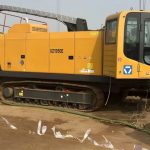
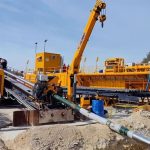
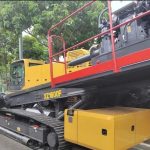
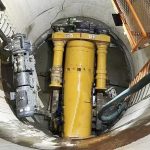
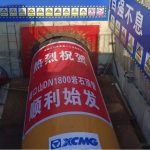
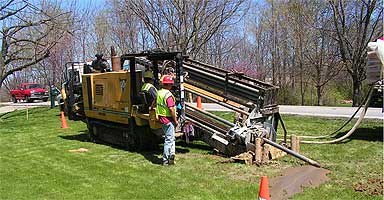
Horizontal Directional Drilling (HDD) is a construction technique whereby a tunnel is drilled under a waterway or
other designated area, and a pipeline or other utility is pulled through the drilled underground tunnel.
The underground tunnel follows an arc line from the entry point, down under the special crossing area, and then resurfaces on the opposite side. Using advanced technology and highly trained technicians, a drill head guides the drilling pipe electronically to ensure the angle, depth, and exit point adhere to carefully designed engineering plans.
Throughout the drilling process, the tunnel is kept open and lubricated by circulating
a watery mud-slurry mixture, typically composed of about 95 percent water and 5 percent bentonite clay—a natural, non-toxic substance. The drilling mud also helps coat the walls of the tunnel and remove drill cuttings.
When the tunnel is 12 inches wider than the diameter of the pipe going through it, the welded pipeline segment can be pulled through the underground arched tunnel from one end to the other end. These pipeline segments are typically made of thicker steel and have a protective first layer of coating to prevent corrosion and
a second abrasion-resistant coating to protect the pipe during the pull through the tunnel. The two ends of the pipeline segment can then be welded together with the rest of that pipeline system.
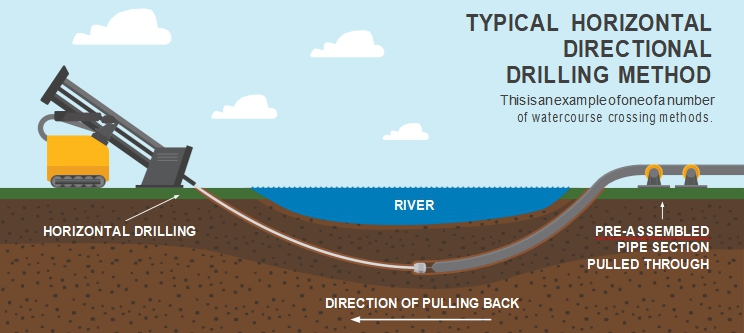
2. Why is HDD used?
Long-distance underground pipelines are built across open areas, such as rural farmlands and urban utility corridors.
Typically, construction crews clear an approved route, dig a specially prepared trench, lower welded sections of pipeline into the trench, and carefully replace removed soil for the restoration process.
Usually, this method is preferred for open area installation and can be completed in a way that minimizes environmental and stakeholder impact, even in sensitive areas.
For large rivers or certain sensitive crossings, directional drilling is an appropriate and preferred construction method, depending on geologic conditions and other factors. HDD construction is considered suitable for large river crossings, extreme congestion (e.g. crossing rail yards), or other unique site-specific situations because it minimizes impacts on the area above
the drill.
Although land around the drill entry and exit locations is disturbed during HDD activities, it will be restored to its pre-drill state.
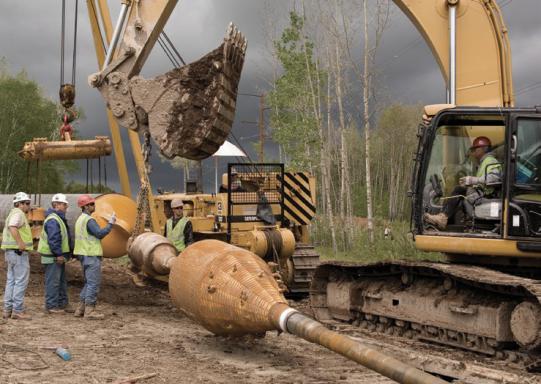
3. What can I expect during directional drilling?
Drilling equipment creates noise during operations. Therefore, Enbridge will, when possible, restrict drilling activity to daylight hours if the equipment is close to occupied buildings or homes. Construction crews may also reduce noise by using structures on the drill site that are designed to buffer and reduce surrounding sound levels.
The length of time needed for drilling depends on the distance of
the underground drill; the geology; the pipeline’s diameter; and, the progress of drilling operations. Sometimes, drilling can be completed in just a few weeks. Other times it may take a few months to complete. Advanced planning can provide an estimated completion time for any specific drill site. These timetables, however, can
be affected by unforeseen conditions.
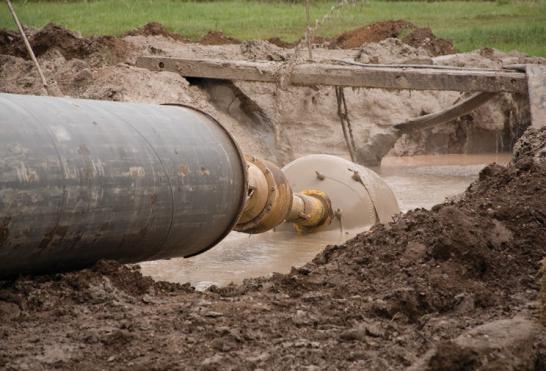
4. Is there regulatory oversight? Yes.
The design and construction of petroleum pipelines is governed by the National Energy Board. As part of the planning, technical codes and standards are followed in preparing detailed geotechnical investigations and engineering surveys.
Depending on the location and purpose of the HDD, some local, provincial or federal authorizations or permits may also be required.
Enbridge plans and performs HDD crossings according to exacting standards, and meets or exceeds regulatory requirements.
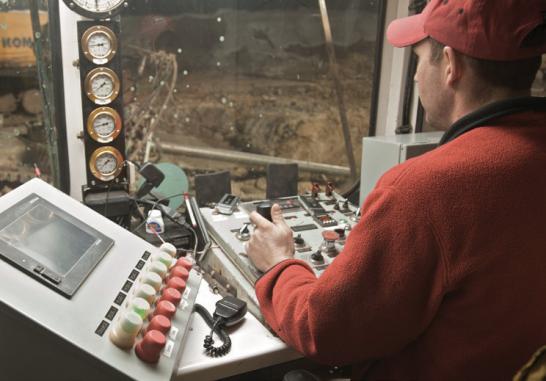
5. Are there environmental risks?
HDD is chosen as a construction technique to reduce or avoid environmental impact.
As with any construction process, however, HDD is not 100 percent risk-free.
Normally, the drilling mixture of water and bentonite clay remains within the
tunnel, including the surface entry and exit points, as it circulates during drilling. This maintains the tunnel’s shape. However, the drilling mud can sometimes surface elsewhere through natural cracks or voids in subsurface soils. This is an unintended release of drilling mud referred to as inadvertent return.
Highly specialized construction technicians using advanced monitoring equipment along with visual monitoring watch for potential problems. Often, the bentonite mixture itself will seal a hole, preventing and minimizing seepage.
However, if a significant amount of drilling mud surfaces outside the drilling area, Enbridge may need to suspend drilling operations and implement more extensive clean-up and containment measures.
Being only 5 percent bentonite, if the mixture enters a waterway, it is usually sufficiently diluted by the river so that no active cleanup is necessary. In any case, Enbridge will work directly with
the appropriate environmental agencies throughout the drilling operation.
In some unusual situations, attempts to complete directional drilling may not be successful. In the event this occurs,
Enbridge may need to propose and seek permits for alternative ways to cross
the area using traditional construction techniques and implement appropriate environmental protection measures
in consultation with designated environmental agencies.
